In her 2015 book Spineless: Portraits of Marine Invertebrates, the Backbone of Life, photographer Susan Middleton succeeded in presenting dozens of marine invertebrates the way they're seen in their world: from eye level. Most famous for her portraits of endangered species, Middleton took a face-to-cephalic sensory organ approach in bringing often sedentary organisms to life. Middleton displayed the patience of a monk, waiting for just the right moment to capture her subjects exhibiting particularly eye-catching behaviors. Back in Friday Harbor this summer, I had the opportunity to meet Middleton when she presented her work to our Salish Sea Sciences Program participants. She let me pick her brain about the specifics of the photographic techniques she used to make such stunning images. Fast forward a few months and this Sunday evening Team Pycno leaders Dr. Amy Moran, Dr. Art Woods, and Dr. Bret Tobalske will be giving a public talk to the McMurdo community wherein they'll outline the research that Team Pycno is undertaking on sea spiders. The presentation is entitled "Eight-legged Freaks," a tongue-in-cheek nod to the upcoming Halloween holiday. I thought I could contribute to the presentation by taking some detailed aquarium photos of our study subjects. Here's my first stab at copying Susan Middleton's style and technique, bringing us down to sea spider level and in the process, closer to seeing them.
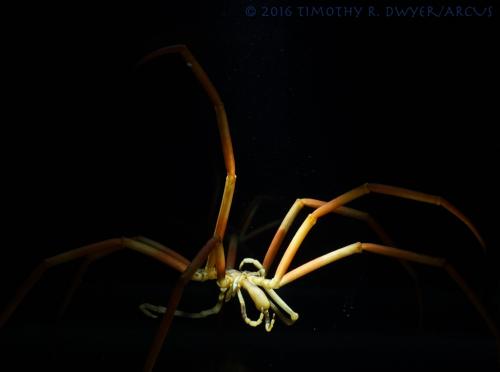
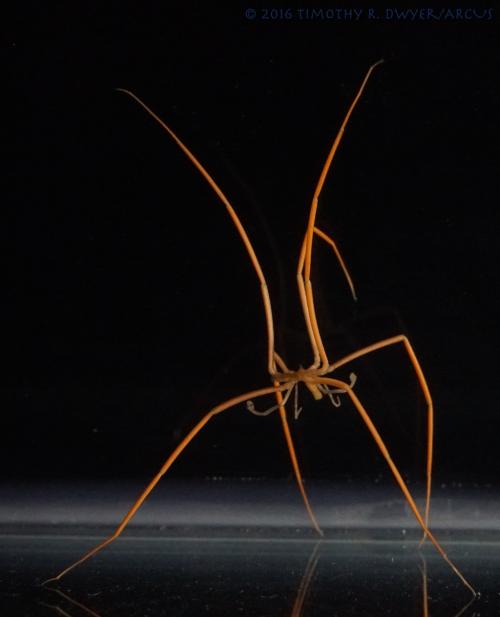
During our meeting last summer, Middleton shared that the process lead her to study each individual animal in detail, getting to know it and its behaviors and "moods." Standing in front of an optical glass aquarium with one finger on the camera shutter and a dive light in my other hand, that conversation came back to me. The more I watched an animal, the more I focused in on details of its anatomy, nuances of its gait, and subtleties of its motion. To be sure, the behaviors that animals exhibit in an aquarium are pretty far from "natural." That being said, the longer I watched, the more I saw.
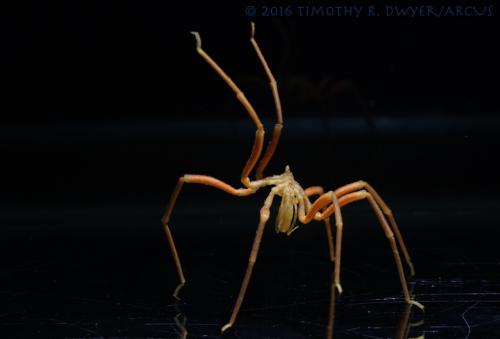
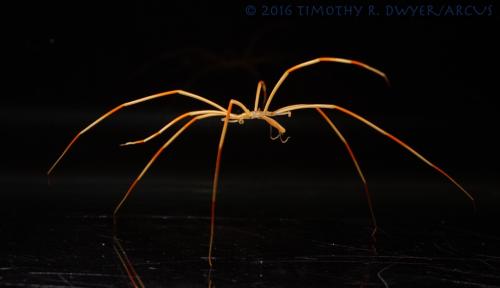
I saw sharply curled ovigers wrapping around limb segments and wiping them clean of encrustations that might choke off gas diffusion and oxygen supply. Packed tightly inside each walking leg, I saw hundreds of eggs, developing towards the moment when they would be gently handed off to a mate. I saw the triangle shaped mouth at the end of the proboscis, sealed tightly until the next meal. I saw the talons at the ends of the legs struggling to grip the smooth glass. I saw the tiny, black, unsympathetic eyes of the peduncle flash back at me when the light hit them at just the right angle. In familiarizing myself with them at a much slower pace than our fast-moving collection dives, I'm coming to understand that giant sea spiders are far from eight-legged freaks.
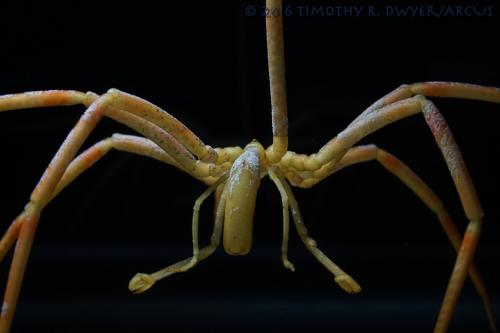
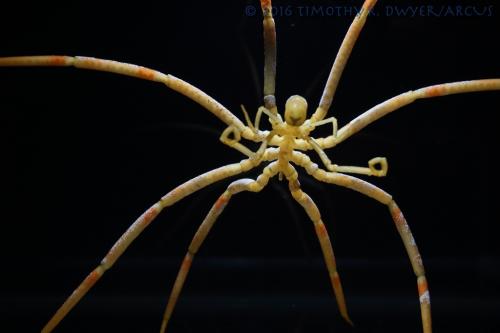
Take another look at the photos above and, in the comments section below, let me know what you see that I might have missed. Maybe I'll give this another shot with a white background to see if anything else jumps out, but in the mean time I'll be sure to watch more carefully from now on.


Comments